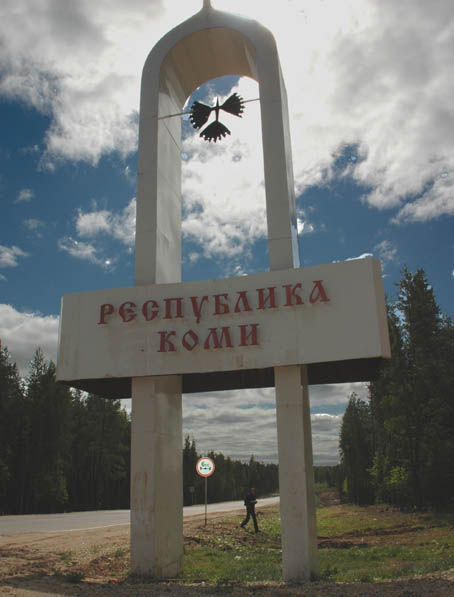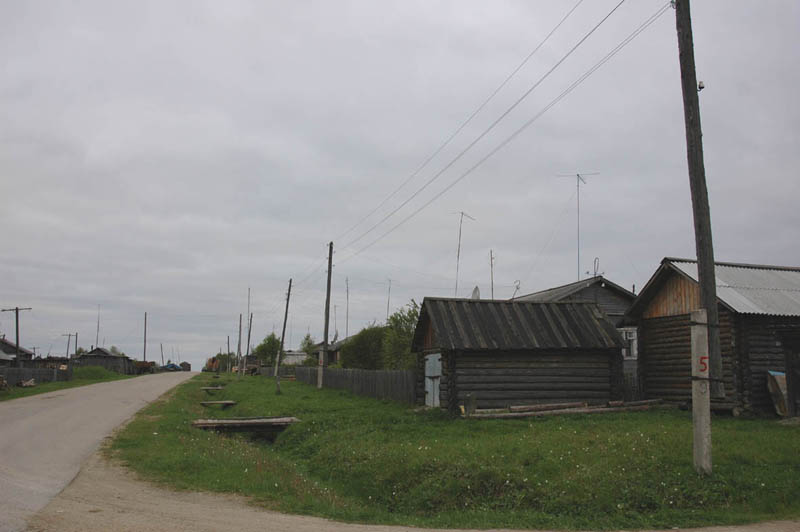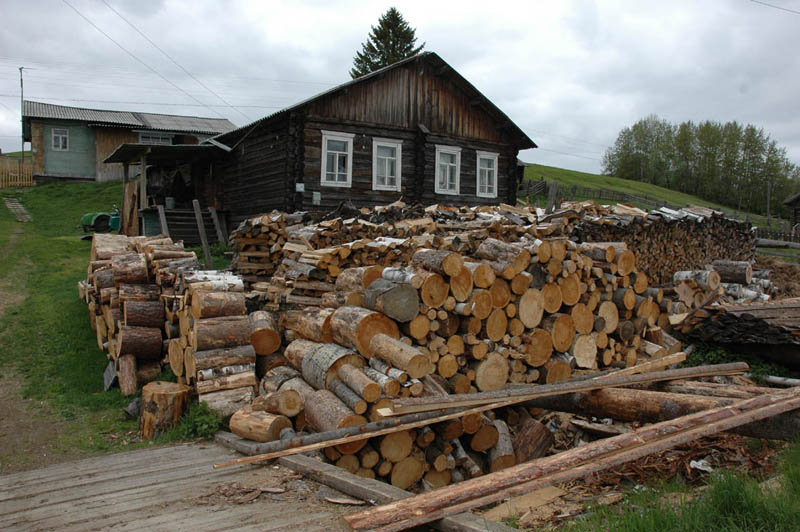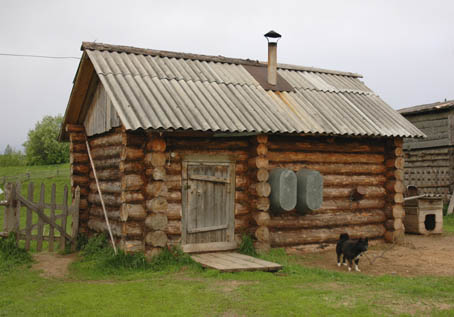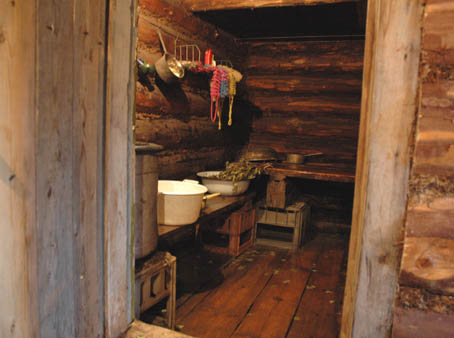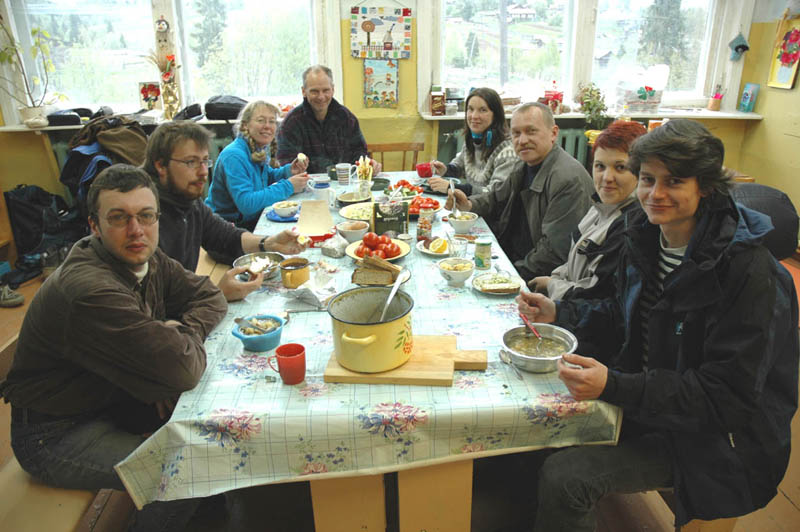

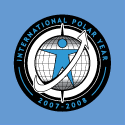

KOMI, northern Russia: Suddenly, the road ends.
Just the magnificent River Vychegda is flowing slowly through the pouring rain right ahead of us.
By Gudmund Løvø
Evgeniy Vyotkin winds his heavily loaded van through the mud and rocks it up a grassy slope. The sodden slope down to the river is a ferry landing. Shortly afterwards, a plume of black smoke is seen drifting above the river and a throbbing motorboat tows a low, steel hull towards the bank. The idea is that, with our wheels spinning, we will negotiate on to that to be ferried to the far side of the river.
Ice Age lakes
We are on the way into the Komi Republic in northern Russia, eastwards through the endless taiga; Norwegian, Russian and German geologists searching for evidence of the enormous lakes that were dammed by the ice in the North during the last Ice Age.
We have chosen the longest and worst road from the town of Kotlas in the county of Archangel, that which crosses rivers and winds bumpily, but with gentle inclines, the 420 kilometres to the regional capital, Syktyvkar. The far quicker, new road lacks tarmac for some kilometres about halfway and becomes an impassable quagmire when it rains.
Many work camps
This is the homeland of the Komi people, but ethnic Komi are no longer in the majority.
Joseph Stalin set up many Gulag concentration camps in this part of Russia, too. He banished dissidents here, oppositionists, politicians and intellectuals. The icy-cold coal-mining town of Vorkuta in the northeast, whose average temperature in January is 20 degrees below freezing, sprang up around one of the largest complexes of camps in the European part of Russia. Some one million prisoners are estimated to have been in these camps from 1930 until they began to be closed in the mid-1950s.
Many of the internees and their surviving relatives have remained here since the Stalin era, as Komi Russians.
Large-scale geology
Night has fallen before we roll into Syktyvkar.
All the way from the timber town of Kotlas, which has the largest paper factory in Russia on its outskirts, we have trundled through a flat, lonesome landscape, broken by gentle ridges and clad in massive coniferous forest; just a spattering of small villages. Now and then, we catch a glimpse of the 1100 kilometre-long, silent Vychegda, which just occasionally awakens and roars when its waters reach an exceptionally sharp bend or its bed is unusually steep.
”This is geology on the large scale. We’re working in an area bigger than France,” Eiliv Larsen, a geologist at the Geological Survey of Norway (NGU), explains. He is heading a group of nine scientists and assistants doing fieldwork in Russia this year.
“When the landscape is as monotonous as it is here, what we find in one place may not change for scores of kilometres. That’s not the case in Norway where everything changes from one valley to the next,” he continues.
Hospitable hosts
The following day, we reach the village of Ust Nem. Log houses, or izba, stained black and with white-painted window ledges, line the streets. Here and there, a goat bleats in a garden. The children are on their way home from school, scarcely a car to be seen, but the shop is open and sells everything.
The road winds through a couple of neighbouring villages before stretching out westwards again. We are now only 200 kilometres from the Ural Mountains, where the River Vychegda has its sources, and this is where we will begin the fieldwork.
Margarita Hayredinova, the headmistress at the junior school in the town, is a model of hospitality. She is perfectly willing to rent us a classroom for a few days, and turns the art room into a dining room for these people from the West.
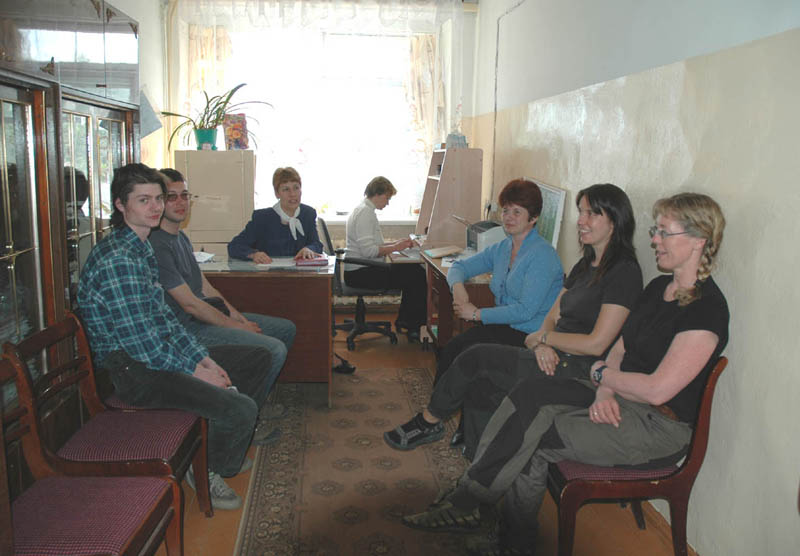
However, Margarita Hayredinova and her biology teacher, Nina Ulyashova, are worried of what the future has in store for the 800 inhabitants of Ust Nem. “Our school draws pupils from three villages. Nowadays, we have 130 pupils here, but there were more than 300 only 20 years ago. People are moving from the villages into the towns,” she explains.
Unemployment
When we wake up in our tents to see snow in the air one morning in June, it is easy to understand why there are enormous piles of wood, sawn, chopped and stacked beside every single izba in all the villages.
The icy winters are, nonetheless, only one of the challenges facing the popular President of Komi, Vladimir Torlopov. This father of two is himself a geologist and can admittedly feel satisfaction about the thriving coal-mining industry and the extensive production of oil and gas in his republic. However, many of the former collective farms lie fallow and the sparsely populated rural areas are marked by both unemployment and over-indulgence in alcohol.
But the banja warms us. Many properties have a bathhouse, a small timber annex in the backyard, with two small rooms. When we go in, undress and enter the scorching hot sauna, the cleansing is perfect.
Hammer and sickle
The next day, behind a door in a corridor at the far end of the school, the field assistant, Alexander Smirnov, Denis Kuznetsov, a geologist, and Udo Müller, a student, find red banners and flags with a sickle, a hammer and the slogan of Vladimir Iljitsj Uljanov Lenin: ”Be prepared, always prepared!”
Today, these young men, who were born in the era of the Soviet Union, but who have grown up with Russia, can take the liberty of poking fun at their recent past. They hold the banner aloft, salute in the old Soviet manner – and laugh.
